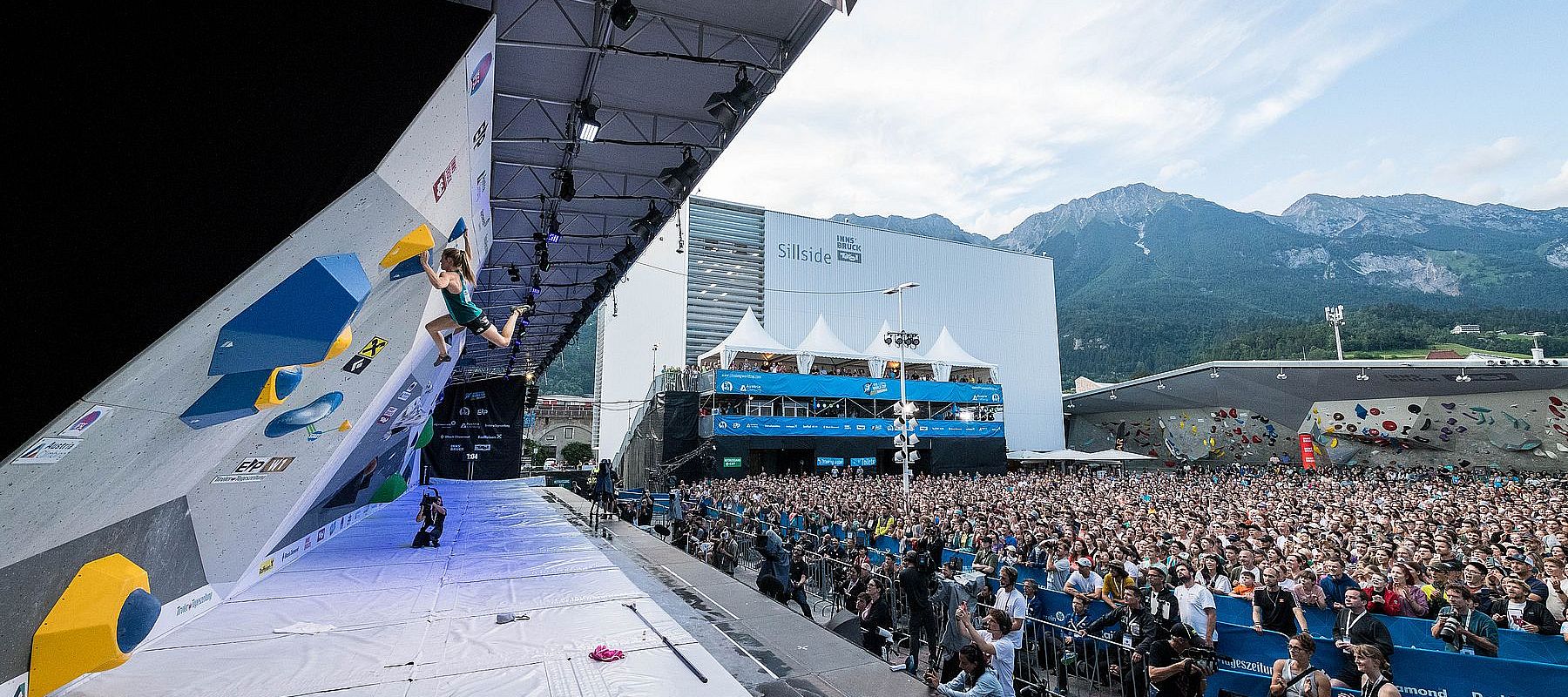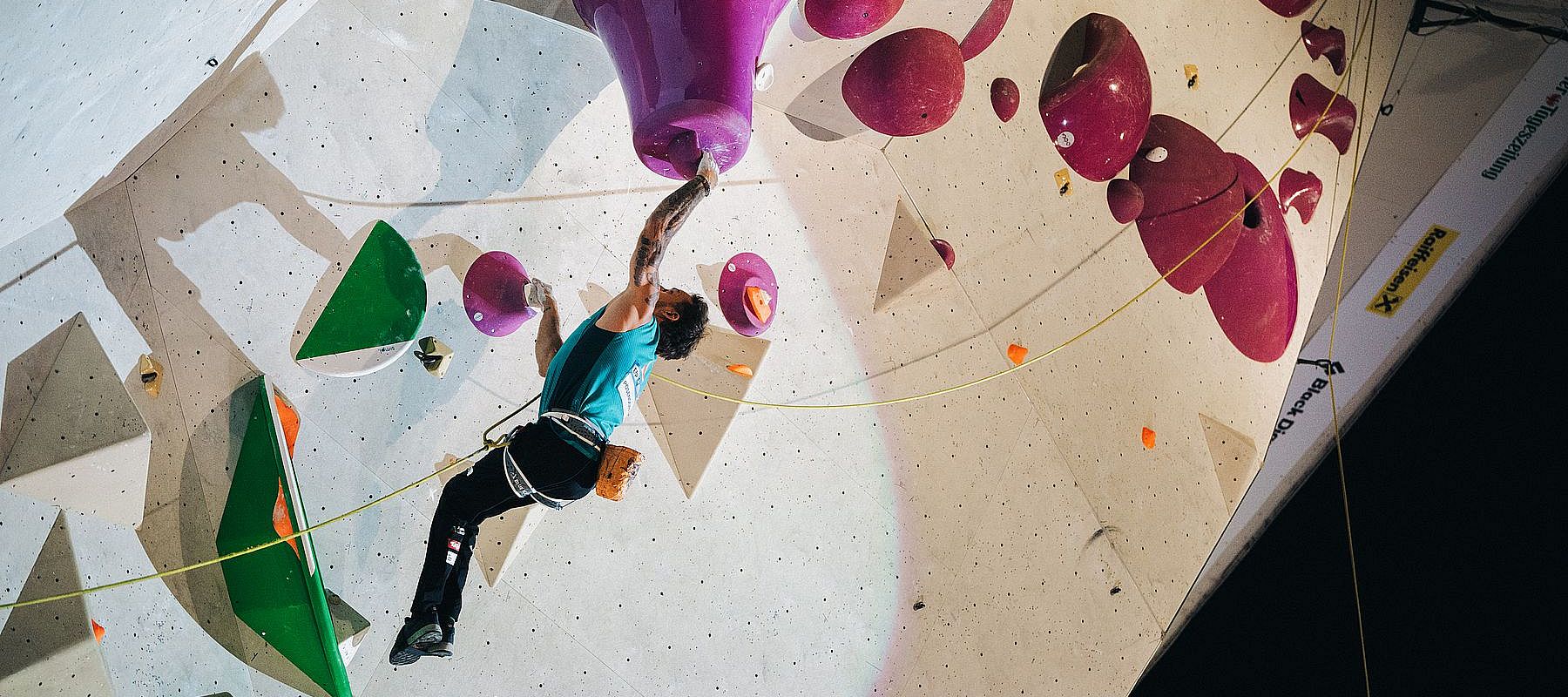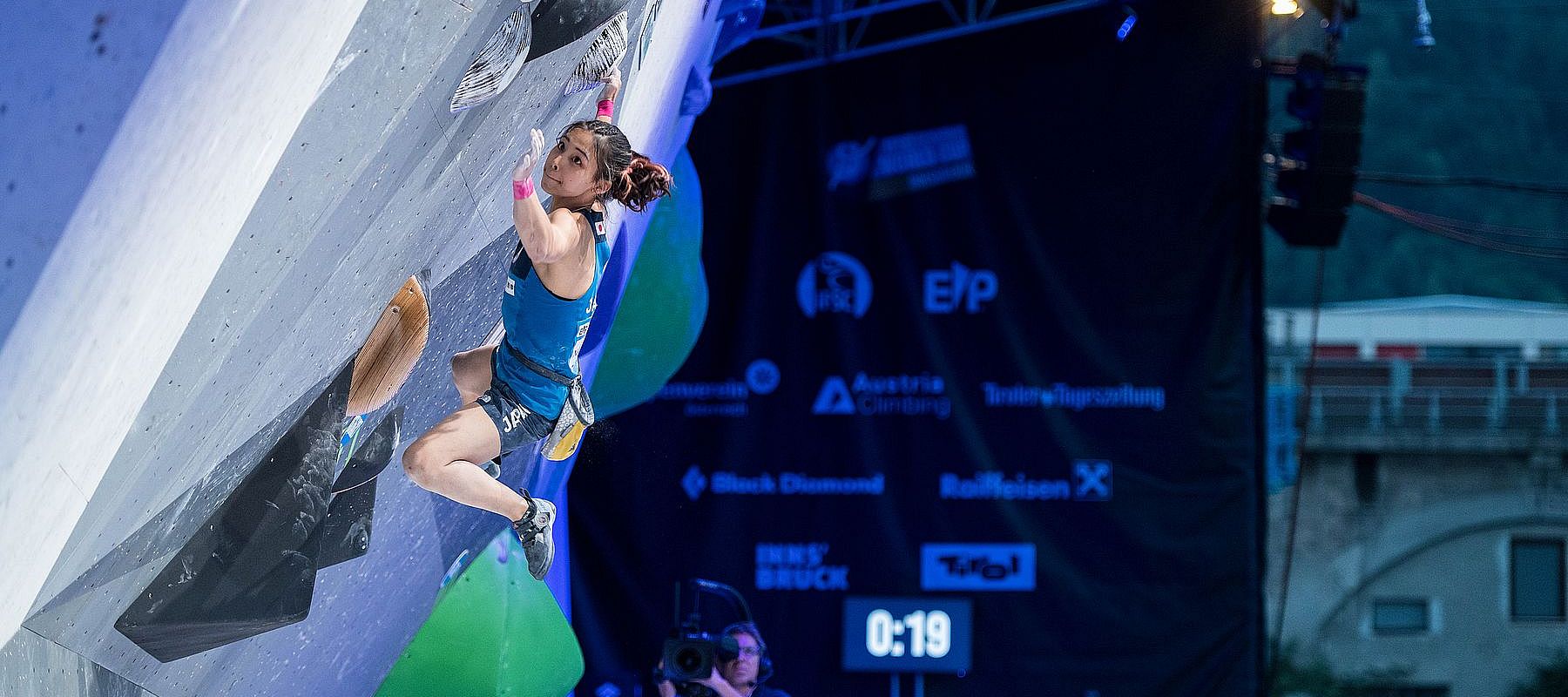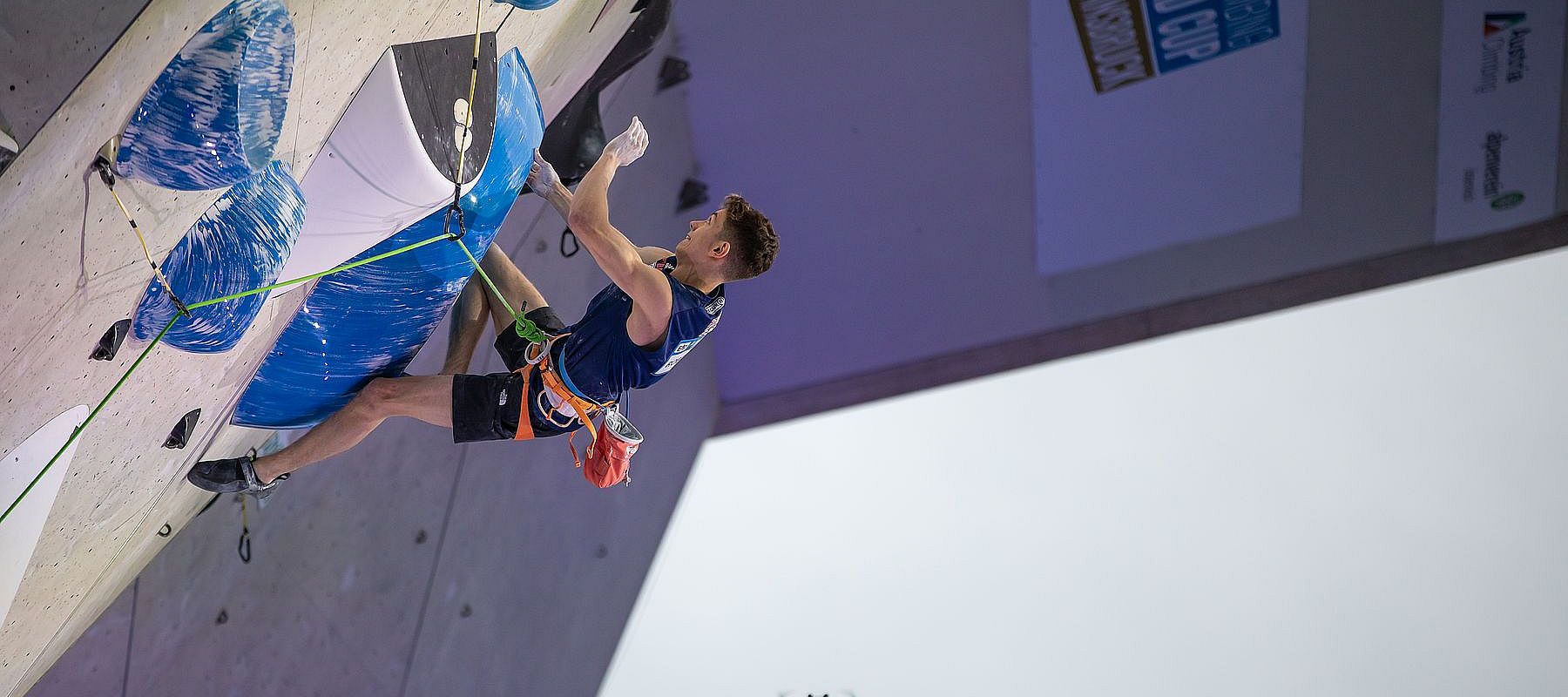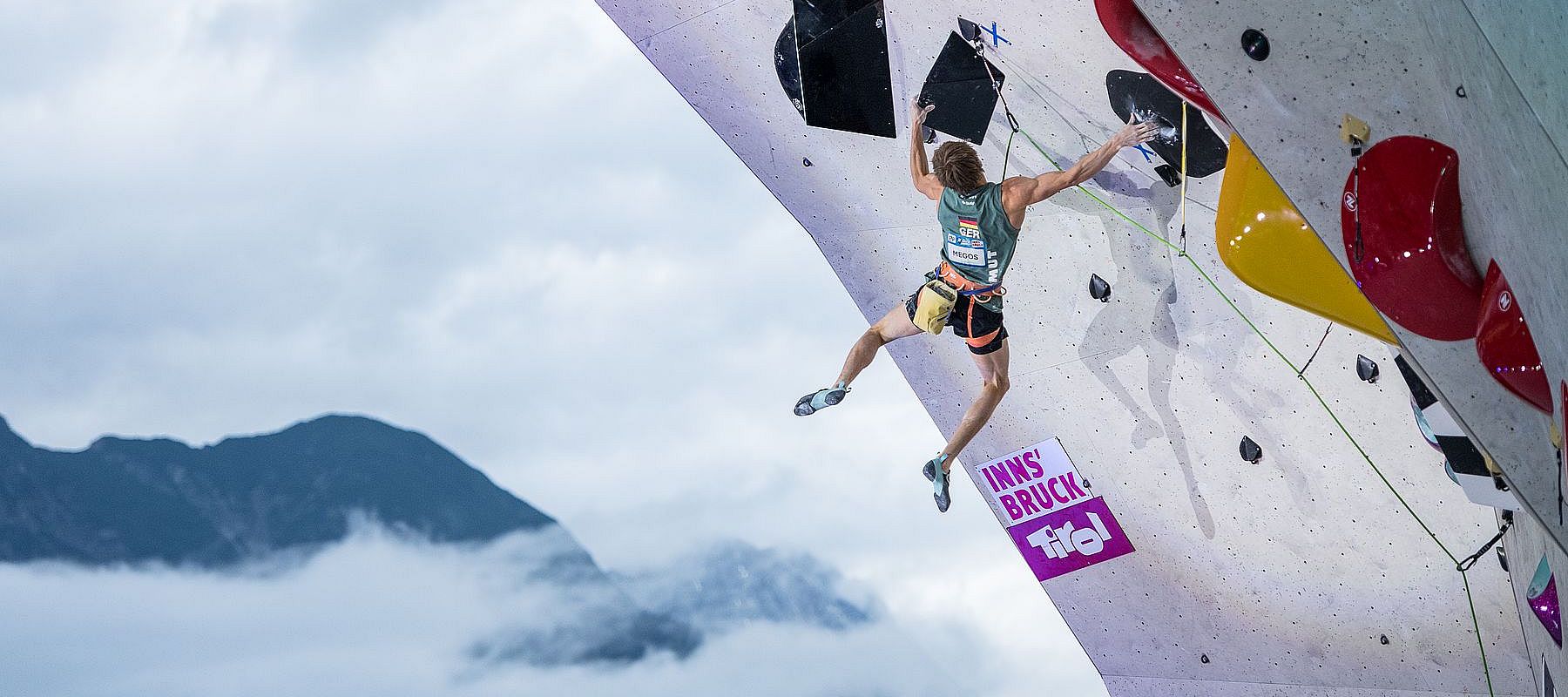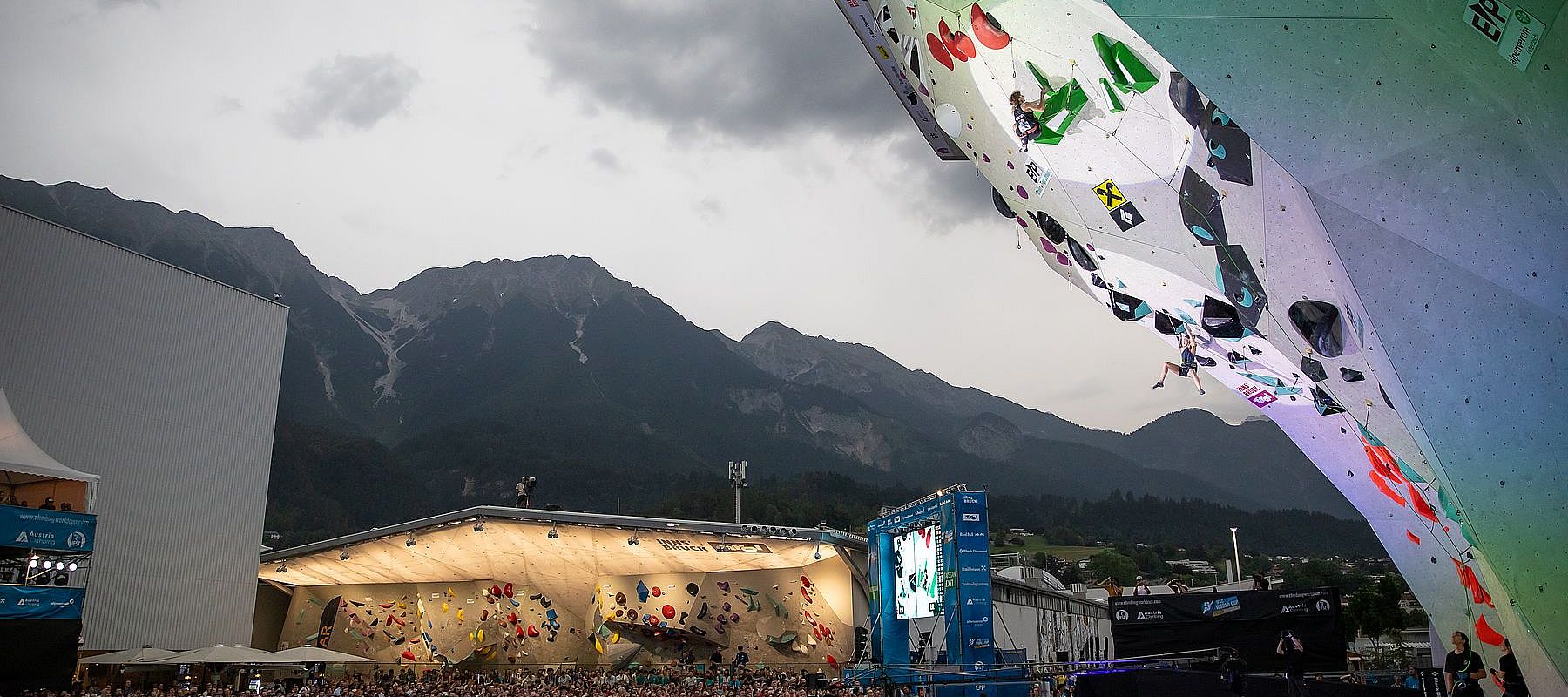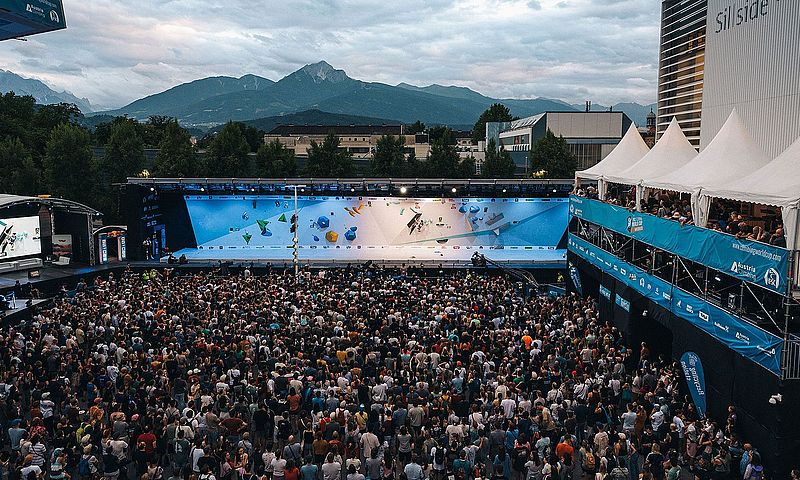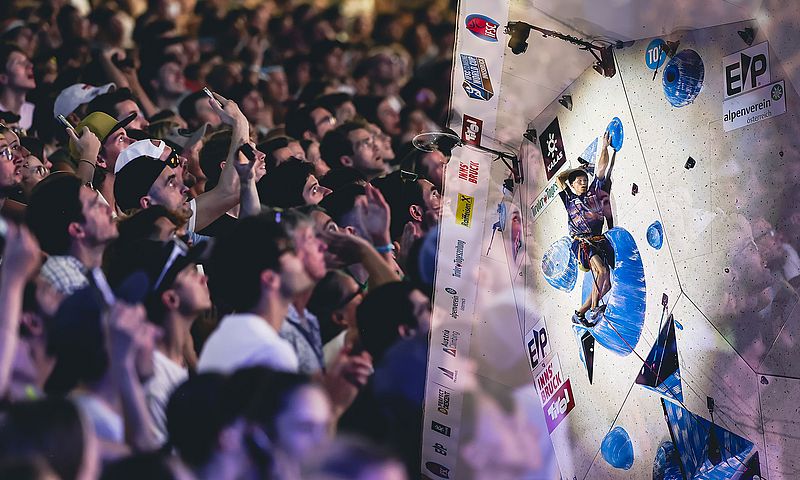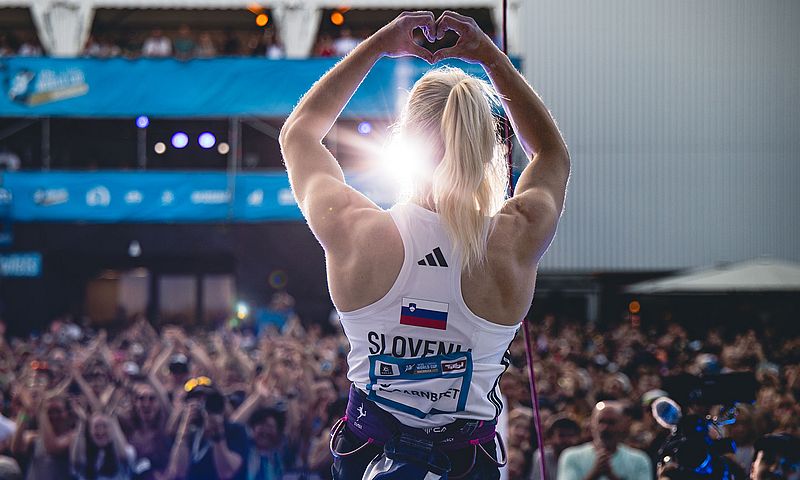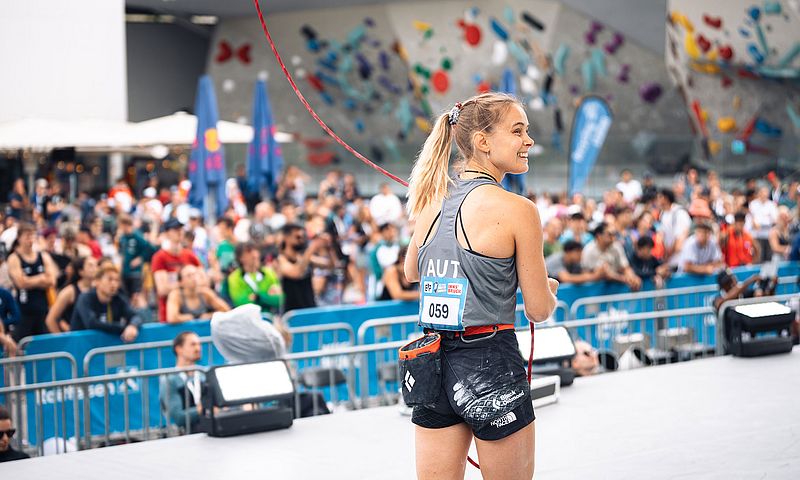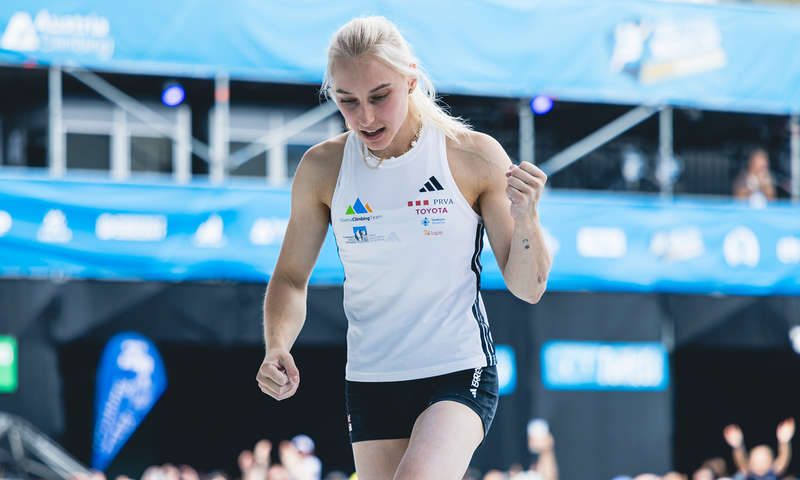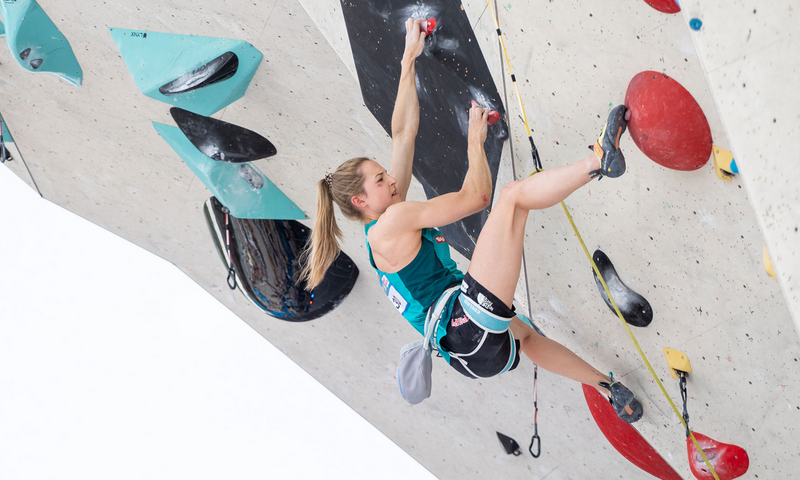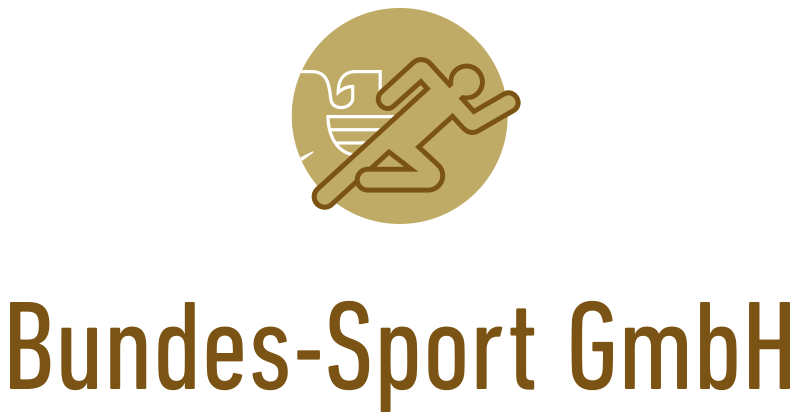Venue
The Climbing World Cup takes place at Kletterzentrum Innsbruck.
The "KI", Kletterzentrum Innsbruck, opened its doors in May 2017, and is one of the world's largest and most modern climbing venues. It sets new standards in terms of size, quality, and architecture. The Kletterzentrum Innsbruck creates synergies between recreational sports and competitive sports. For everyone, hobby- and professional climbers alike, there are 5,700 m² of climbable surface: 3,000 m² for indoor lead climbing, 1,200 m² for bouldering and 1,500 m² for outdoor climbing. The “KI” offers everything a climber’s heart could possibly desire.
Disciplines
The IFSC Climbing World Cup Innsbruck combines three disciplines of Sport Climbing in one event – Boulder, Lead and Para Climbing.
All disciplines require different skills from the athletes.
Lead:
Lead competitions have been organised for more than 30 years. The climbers face a 15 – 20 meter high wall and climb the routes with a safety rope. The goal is to climb as far as possible on a previously set route within a time limit. This discipline requires a lot of power, endurance and determination.
Boulder:
Bouldering is climbing without a rope or harness. The walls are smaller which means the climbers can jump down and are protected by mats. The athletes face a previously set round of boulder problems and need to climb them in as little tries as possible within a time limit. This discipline primarily requires coordination, power and flexibility.
Para Climbing:
Paraclimbing ist sport climbing for people with physical disabilities. For safety reasons, they climb "top-rope". In comparison to Lead that means the rope is already clipped in at the top and is not clipped in by the athletes during their climb. To make the competition as fair as possible, the athletes are assigned to different Para Climbing Sport Classes, depending on their disabilities. In general, Para Climbing works like a Lead competiton, it is about climbing as high as possible.
There are a total of 10 different start classes in which athletes are categorized.
- Visually impaired start classes (B1, B2, B3)
- Amputees (AU2, AU3, AL1, AL2)
- Neurological/physiological impairments (RP1, RP2, RP3)
B1 athletes are completely blind and climb with a blindfold, while B2 and B3 athletes have limited vision or a severely restricted field of vision.
Athletes in the AU2 category have an amputation of the forearm with limited reach, while AU3 athletes have functioning wrists but limitations in their hands or fingers.
AL1 athletes are wheelchair users as they have no control over the lower half of their body. AL2 athletes have a leg amputation and decide whether to climb with or without a prosthesis.
RP athletes have neurological or physiological limitations that affect their mobility, coordination and strength. Their climbing styles vary greatly depending on their individual limitations.
History of Sport Climbing Competitions in Innsbruck
Already in 1991 the first World Cup took place in Innsbruck, however only in the Lead discipline. After some years of waiting and other organizational challenges, the market place in Innsbruck with its breathtaking mountain scenery in the background became the venue for the spectacular Boulder World Cups from 2012 to 2014. In 2016 the Boulder World Cup took place in Innsbruck's Olympic Center (Olympiaworld) for the first time, due to the ever growing number of spectators.
After the Austrian Climbing Federation was busy organizing the Youth World Championships in 2017 and the World Championships in 2018, the World Cup format finally came back to Innsbruck in 2021. In 2022, there were two major international climbing events at the Kletterzentrum Innsbruck. The Innsbruck 2022 FISU World University Championship Sport Climbing and the IFSC Climbing World Cup. After World Cups in 2023 and 2024, the edition in 2025 marks the fifth consequetive year of World Cup Climbing in Innsbruck.

